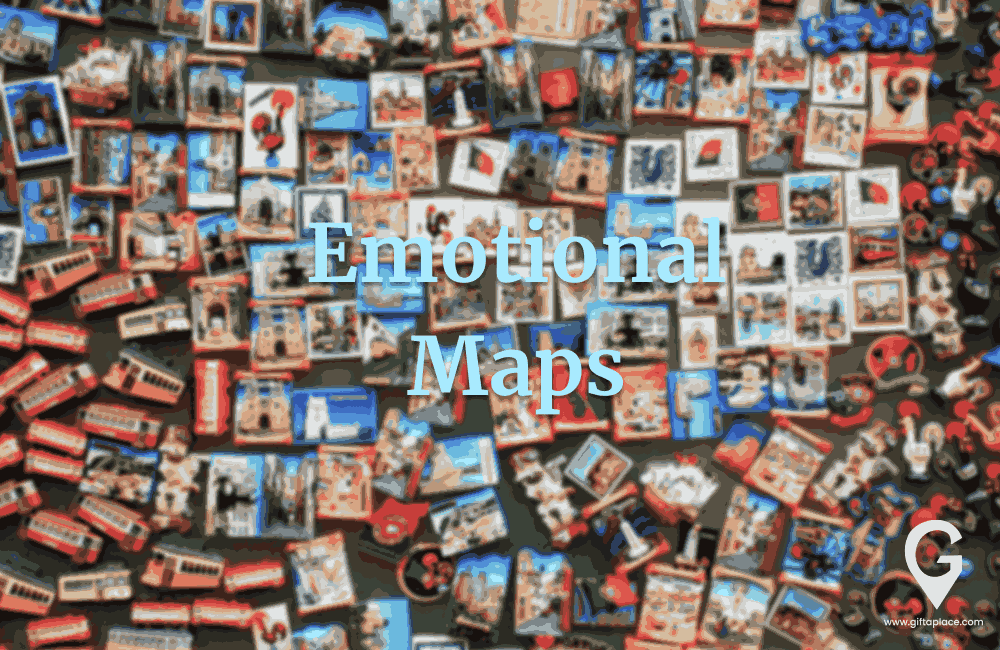Traveling can be an enriching experience that creates unforgettable memories. However, as time passes, some of those memories can fade away or become blurry. To preserve those memories, people often rely on photographs, videos, or journals. But what if there was another way to capture and remember those experiences? This is where emotional maps come into play. Emotional maps are customized maps that help travelers to record and share their emotions and memories related to specific places they have visited. In this article, we will explore the concept of emotional maps and how customized maps can help preserve travel memories.
What Are Emotional Maps?
Emotional maps are a unique way to document travel experiences that goes beyond traditional maps. Emotional maps are created to preserve the emotional and personal memories associated with travel. Rather than simply plotting out physical locations, emotional maps capture the feelings, experiences, and personal connections travelers make while exploring new places. These maps can be created through a variety of mediums, including illustrations, photographs, and written accounts, and serve as a visual representation of the traveler's emotional journey. Emotional maps differ from traditional travel maps in that they prioritize the personal and emotional connections travelers make with places, rather than just the physical locations they visit.
The Importance of Travel Memories
Travel memories are an essential part of our lives as they help us connect with different places, cultures, and people we meet along the way. Memories from a trip can also help us revisit experiences and emotions that can bring joy and happiness. Emotional maps play a vital role in preserving travel memories by offering a visual representation of the journey, highlighting important landmarks and experiences, and helping travelers reflect on their experiences long after the trip is over. Emotional maps can be created to personalize travel experiences and help travelers create a deeper connection with the places they visit.
How to Create an Emotional Map
Creating an emotional map is a creative and personalized process that allows travelers to capture and preserve their unique travel experiences. Here is a step-by-step guide on how to create an emotional map:
- Choose a map: Select a map of the location that you traveled to or plan to travel to. The map can be physical or digital.
- Identify significant locations: Think about the places that you visited during your trip that had a significant emotional impact on you. These can be places that you loved, places where you met new people, or places that taught you something new.
- Add personal touches: Use symbols, stickers, or pictures to mark the locations that you identified in step 2. You can also add personal notes or anecdotes to each location.
- Use color: Use color to represent different emotions or experiences. For example, you can use red to represent places where you felt exhilarated or happy, and blue to represent places where you felt calm or peaceful.
- Add texture: Add texture to your map to give it a more tactile feel. You can use materials like fabric, glitter, or paint to create a unique and personalized map.
- Include additional details: Add additional details to your map, such as the date of your trip, the duration of your stay, or the people that you traveled with.
- Frame or display: Once your emotional map is complete, you can frame it or display it in a creative way that allows you to revisit your travel memories whenever you want.
Creating an emotional map is a great way to personalize your travel experiences and preserve your memories in a unique and creative way.
Customization Options for Emotional Maps
Customization is an essential element in creating emotional maps. Here are some customization options available for emotional maps:
- Personalized icons and symbols: Emotional maps can include personalized icons and symbols that represent memories and emotions associated with specific locations.
- Color schemes: The use of different color schemes can help distinguish between different types of locations, such as restaurants, hotels, and tourist attractions.
- Photographs: Including photographs of specific locations on the map can help preserve memories and emotions associated with those locations.
- Annotations and notes: Emotional maps can include annotations and notes that provide additional information about specific locations or memories associated with those locations.
- Hand-drawn elements: Including hand-drawn elements, such as illustrations or sketches, can add a personal touch to emotional maps.
- Customized borders and shapes: Emotional maps can have customized borders and shapes that reflect the personality and preferences of the creator.
These customization options can help create unique and personalized emotional maps that preserve memories and emotions associated with travel experiences.



